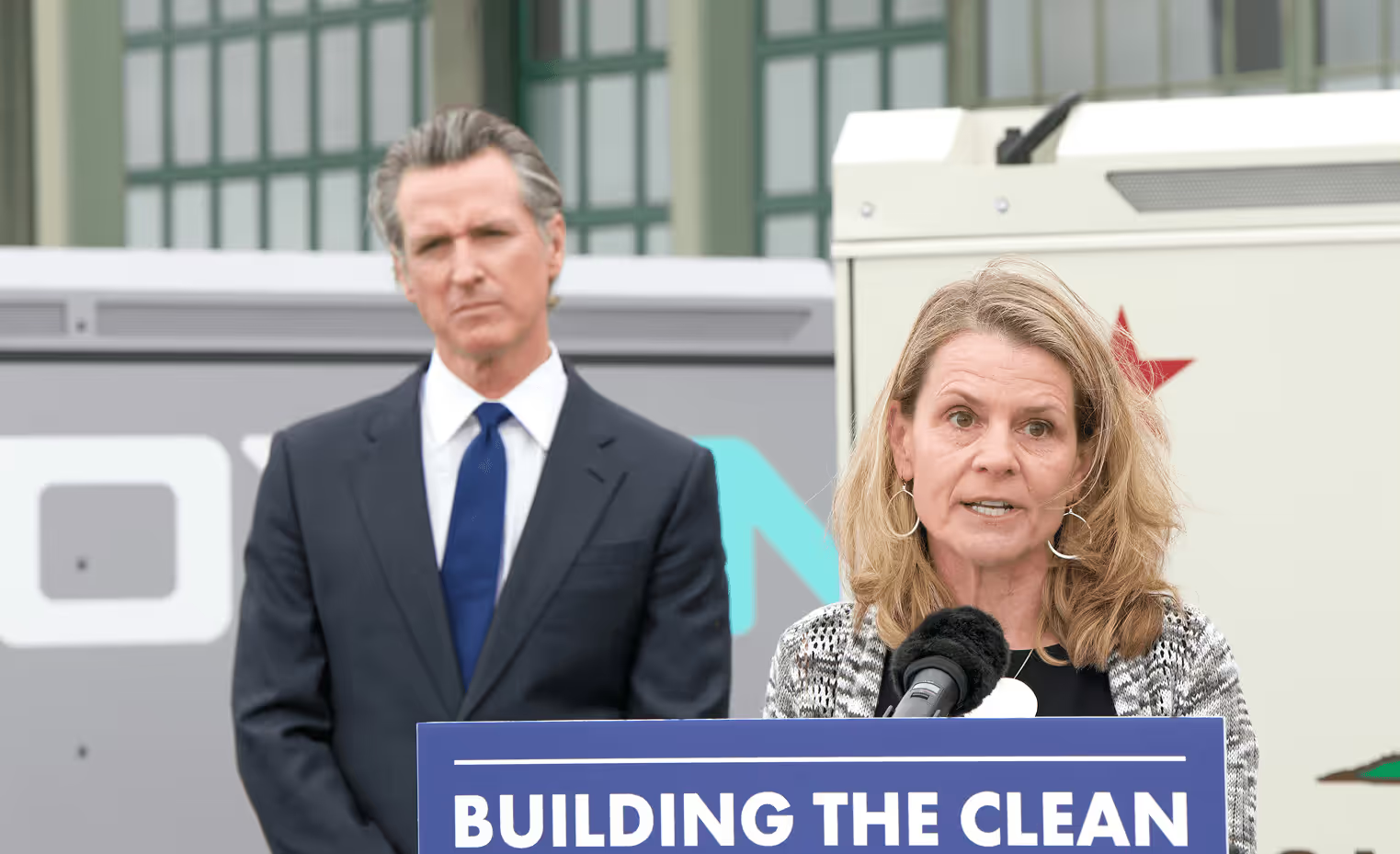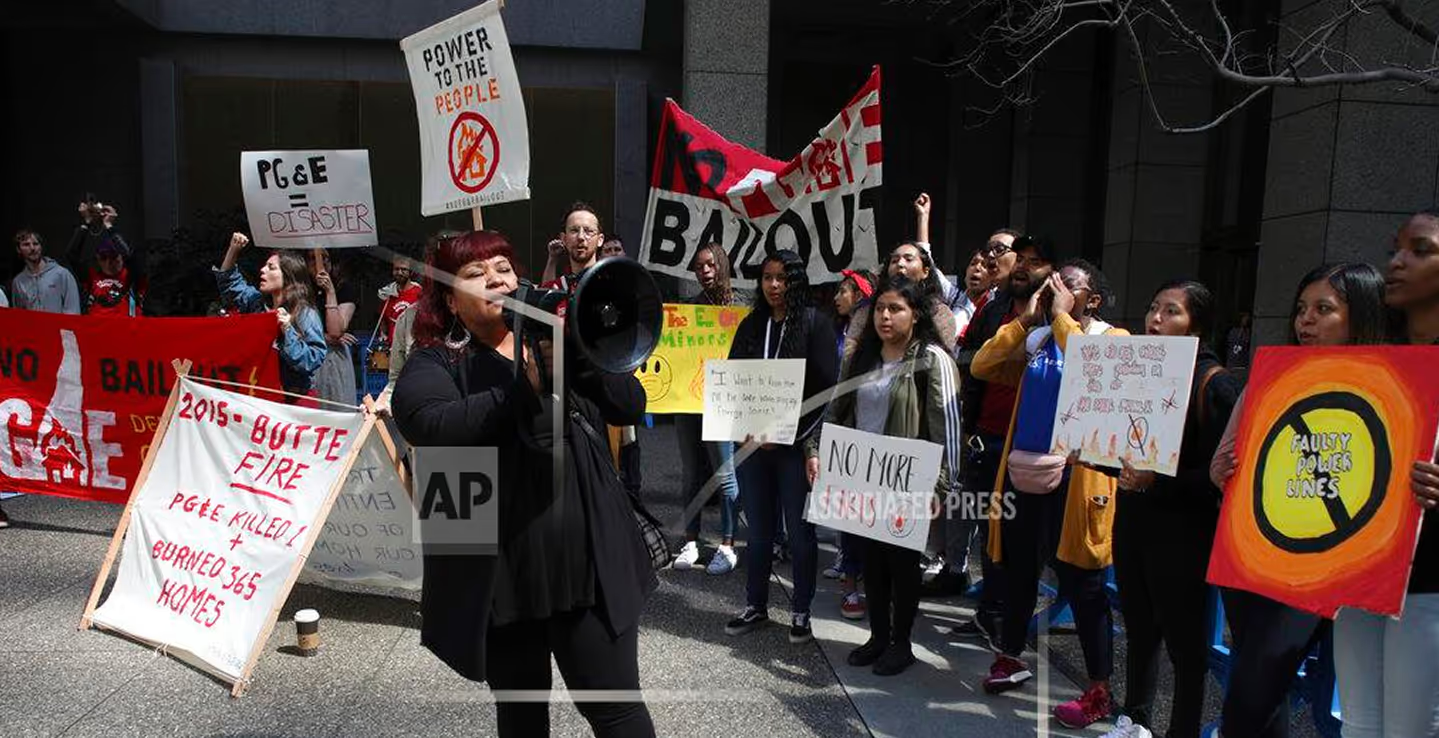
Utility bills in California have doubled over the last decade...
...as the for-profit utilities push through billions of dollars a year in rate hikes effectively rubber-stamped by the California Public Utilities Commission.
And how are these monopoly utility companies using our money? To reap record profits for their investors and hundreds of millions of dollars a year for their executives.

.svg)
So why aren’t these for-profit monopolies better regulated?
And the worst part? The for-profit utilities are using our money to fight against our own interests.
.svg)



Understanding how the investor-owned utility business model leads to corrupt practices.
How does a for-profit utility make money?
California’s investor-owned utilities don’t make money off of selling an electron to their customers, like a normal business. Instead, they profit off of every dollar they spend on grid infrastructure, such as distribution poles and transmission wires. In this way, California’s utilities are more like construction companies than energy companies. The more poles and wires they build (and maintain), the greater their profits. In fact, they are guaranteed a ~10% profit per year on every dollar spent on the grid. This is why investor-owned utilities have spent millions of dollars lobbying politicians to approve their ever-increasing infrastructure spending proposals, whether or not it’s needed. It’s why they push hard to have California’s power plants built in far-away locales requiring hundreds of miles of poles and wires to deliver the electrons to our cities, while simultaneously attacking alternatives like rooftop solar that reduce the need for all those poles and wires.
Who approves bill increases for ratepayers?
As a “regulated monopoly,” California’s investor-owned utilities are subject to oversight by the California Public Utilities Commission (CPUC), headed by five commissioners appointed by and serving at the pleasure of the Governor. In practice, the CPUC operates more like a rubber stamp for the utilities, approving six consecutive rate hikes for PG&E in 2024 alone.
I’m a renter, does monopoly utility corruption impact me?
Renters can be particularly vulnerable to rate hikes and other efforts by the investor-owned utilities to deprive them of their ability to access local, affordable energy. Last year, investor-owned utilities and their allies spent massive amounts of ratepayer money to lobby legislators against capping a “utility tax” that would penalize renters and those in small homes who are inherently using less energy. The lobbying paid off, and a bill that would have reined in out-of-control utility rates for renters was quietly killed. Then, later that year, the utilities succeeded again - by convincing the Governor to veto a bill that would have restored a workable program for renters, as well as schools, to lower their bills through access to rooftop solar.
What is regulatory capture?
Regulatory capture occurs when a government agency, established to protect the public’s interest, instead advances the commercial or special interests of the industry it is meant to oversee. In California, environmental and consumer advocates have increasingly argued that the California Public Utilities Commission (CPUC) has fallen under the influence of the very utilities it is tasked with regulating—namely, the state’s three investor-owned electric companies: Pacific Gas & Electric (PG&E), Southern California Edison (SCE), and San Diego Gas & Electric (SDG&E).
Regulatory capture at the CPUC may be both a symptom and result of the revolving door between commissioners and utility executives. The cozy relationship between the regulator and the utilities to be regulated can assure highly-compensated job prospects for former commissioners, or the opportunity to be in a prominent public position for those leaving the utility. This, along with group think from being lobbied day in and day out by legions of lawyers who work for the utilities can explain why the CPUC repeatedly approves rate hikes, making only minor changes to the utility’s original proposals.
What is a monopoly utility and why is the system so broken?
A monopoly utility is a private for-profit company that has been given government-backed exclusive control over an energy product such as electricity. California’s private utilities are backed by Wall Street which means they are obligated to deliver ever increasing quarterly profits to their shareholders. California’s investor-owned utilities were founded in the late 1800s and early 1900s when the available technologies around generating and delivering electricity were far more limited than they are today. In 1996, California passed legislation to “deregulate” its electricity industry by requiring the utilities to divest from at least half of their generation assets, e.g. power plants. As a result, California’s utilities became transmission and distribution companies - owning and profiting off of the “poles and wires” needed to deliver electricity to our homes and businesses. Because California’s investor-owned utilities, like PG&E and So Cal Edison, are not subject to competition given their government-protected monopoly status they are insensitive to price pressures. Consumers have very little choice in the marketplace. Even so-called “Community Choice Aggregators” (CCAs) don’t offer an escape from the oppressive investor-owned utility rate increases as they only control half of a utility bill: the generation side. Customers of CCAs are still required to pay the big monopoly utilities for the delivery of electrons to their doorstep (e.g. transmission and distribution costs). Because the monopoly utilities and their affiliated allies, such as their powerful labor union, are able to make lavish campaign contributions to politicians and use ratepayer money to lobby government regulators, the fox effectively owns the hen house. The undue influence of California’s gigantic and extremely wealthy for-profit utility companies has led to a very broken system that needs a ground-up overhaul.



